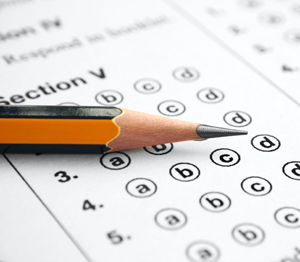Oklahoma’s 2022 National Assessment of Education Progress (NAEP) test results show Oklahoma’s academic outcomes have plummeted, have fallen far faster than most states, and are at levels below nearly all states.
Oklahoma’s NAEP score for fourth-grade reading was on a strong upswing and above the national average in 2015, State Superintendent of Public Instruction Joy Hofmeister’s first year in office. It’s been downhill ever since. Today, only three states do worse.
Sadly, most outcomes were already bad prior to this year’s results. Allison D. Garrett, chancellor for the Oklahoma State System of Higher Education, recently told lawmakers that “14 percent of our high-school graduates are coming from high school ready to study at the college level in all four areas—which means 86 percent of them are not.”
When the State Chamber of Oklahoma polled business leaders, 60 percent cited workforce challenges as the number one issue challenging their business survival. Similarly, state Sen. Adam Pugh, R-Edmond, has said companies have declined to move to Oklahoma due to the lack of an educated workforce.
Two excuses have been offered. Excuse one: Oklahoma has a high rate of children with adverse childhood experiences (ACEs). Excuse two: Oklahoma doesn’t spend as much per-pupil as many states.
But states that normally rank below or alongside Oklahoma for per-pupil spending did better than Oklahoma on NAEP’s fourth grade reading test: Mississippi (217), Arizona (215), Idaho (215) and Utah (221).
And it’s not as if Oklahoma doesn’t spend money on education. Oklahoma has spent a combined $50 billion on schools throughout Hofmeister’s tenure, and state spending has increased significantly since 2018. But NAEP scores are now worse than they were when Oklahoma spent less.
Adverse experiences do impact children’s learning, but every state serves children with ACEs. Are we really supposed to believe children in Oklahoma consistently have much worse lives than children in Mississippi, etc.? Also, charter schools and private schools in Oklahoma and elsewhere specifically recruit and accept students with ACEs, and those students’ long-term outcomes have often increased, not declined, even with less per-pupil funding.
One recent study adjusted states’ 2022 NAEP scores based on student demographics, including poverty. That usually boosts high-poverty states like Oklahoma. But Oklahoma still ranked in the bottom tier. In fact, several states with higher rates of child poverty had higher NAEP scores than Oklahoma even without adjusting for demographics.
Hofmeister’s policies encouraging inappropriate local COVID responses played a role in this year’s poor results. Every state faced COVID. Not every state experienced the decline Oklahoma did. In fact, Oklahoma’s results were worse, and fell far faster, than nearly all states. And the decline in Oklahoma began before COVID.
Oklahoma’s poor academic results are not a product of spending or due to Oklahoma children being somehow uniquely unsuited for education. The bad results are the product of bad policy choices. It’s time to sound the alarm.
About the author, Jonathan Small serves as president of the Oklahoma Council of Public Affairs.




